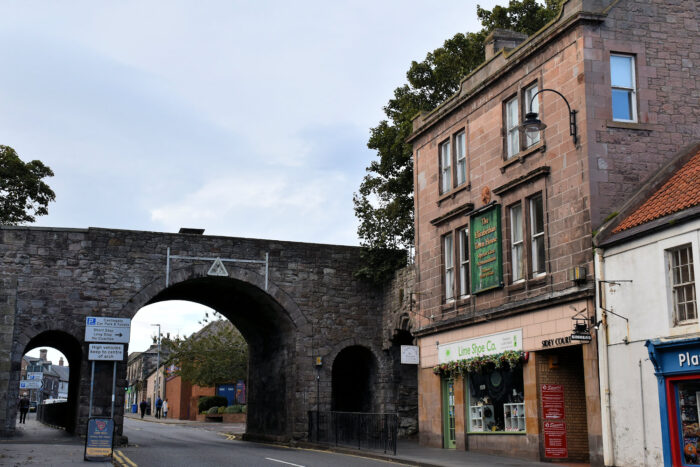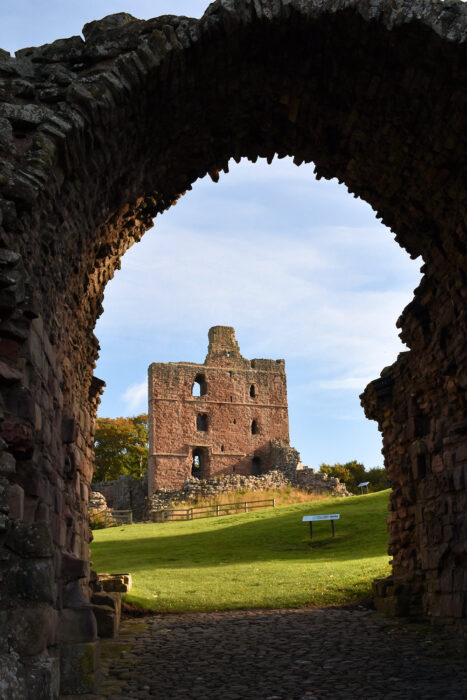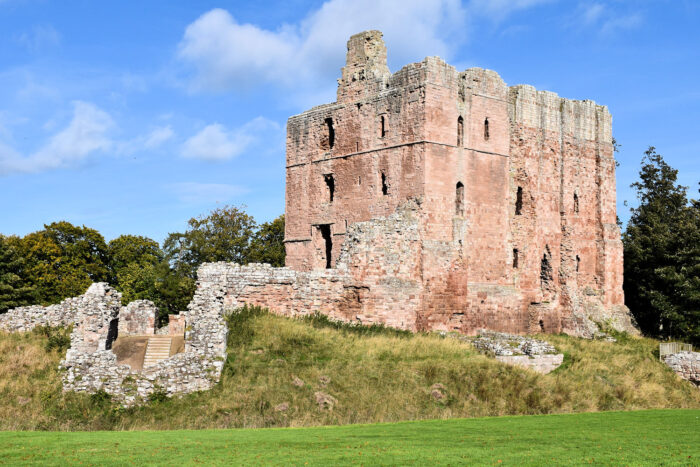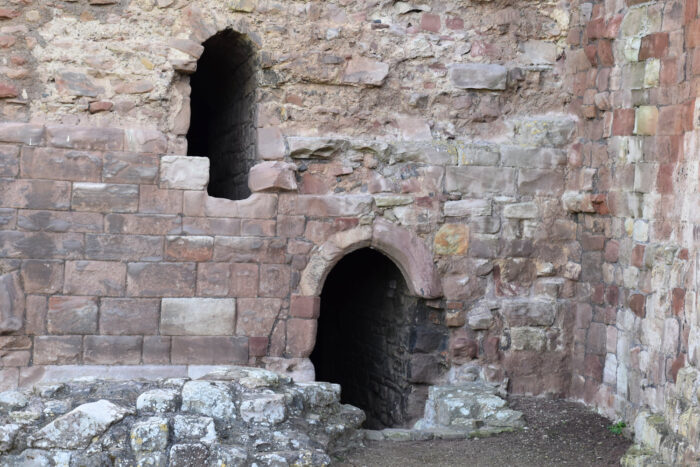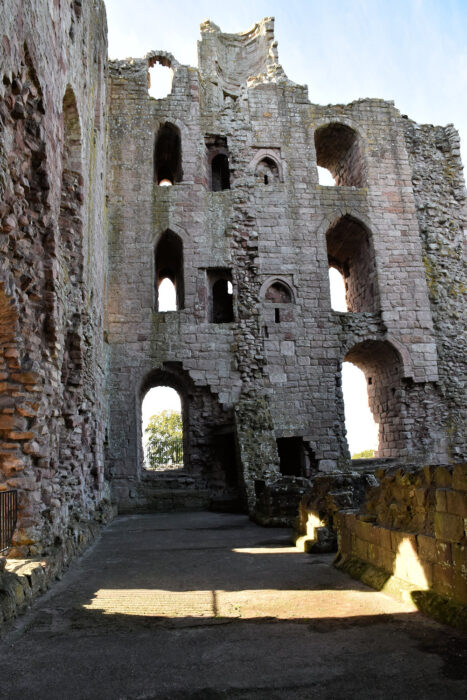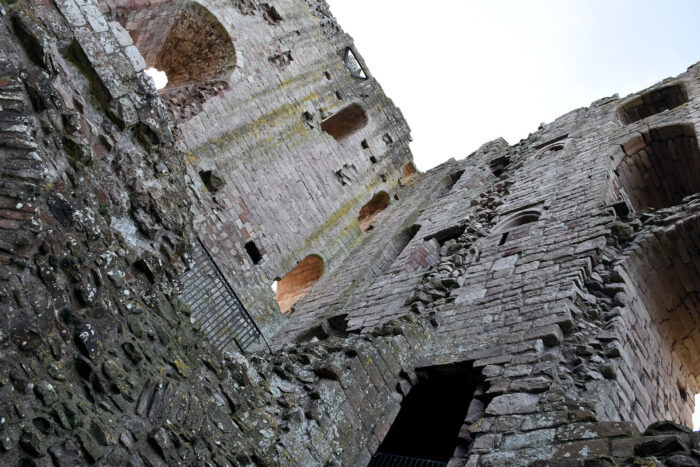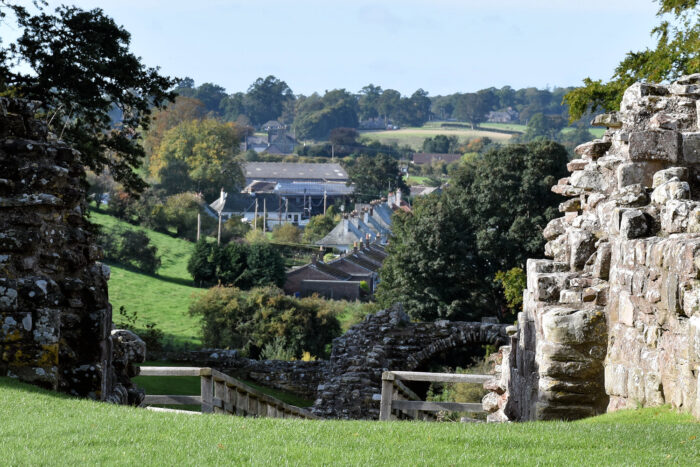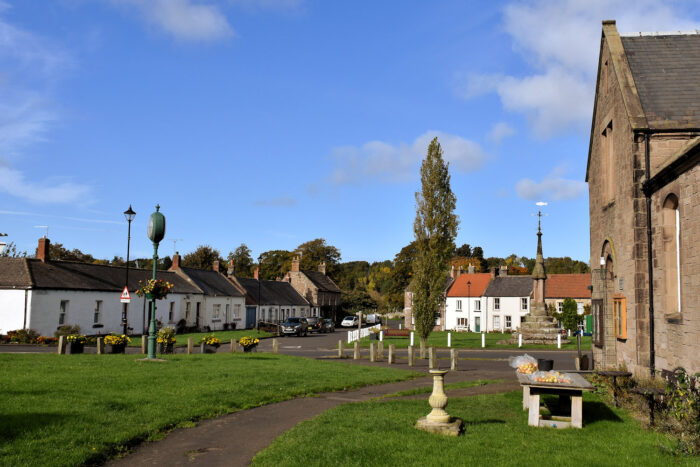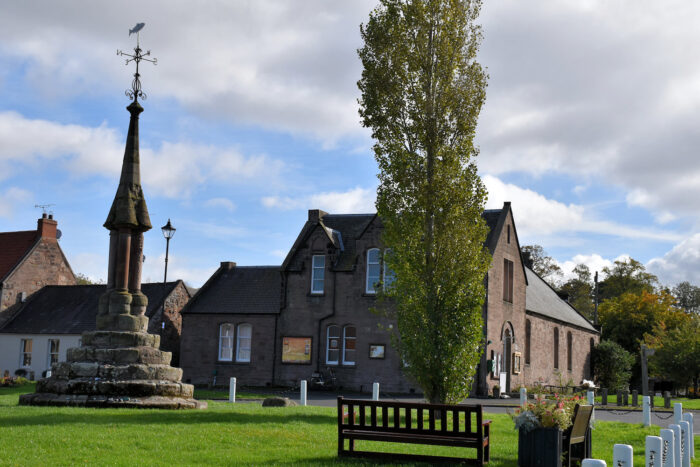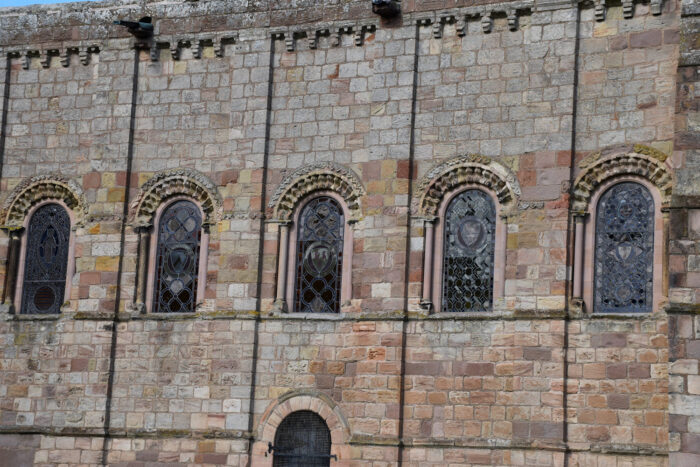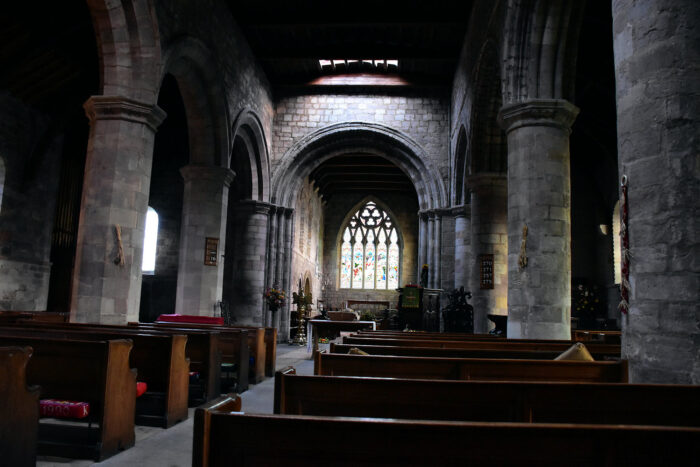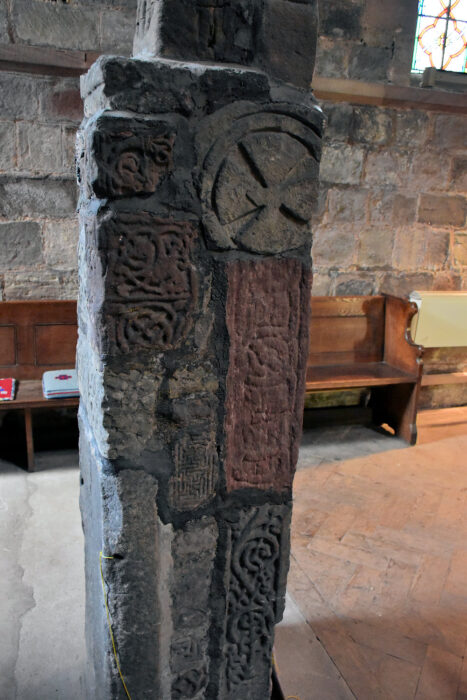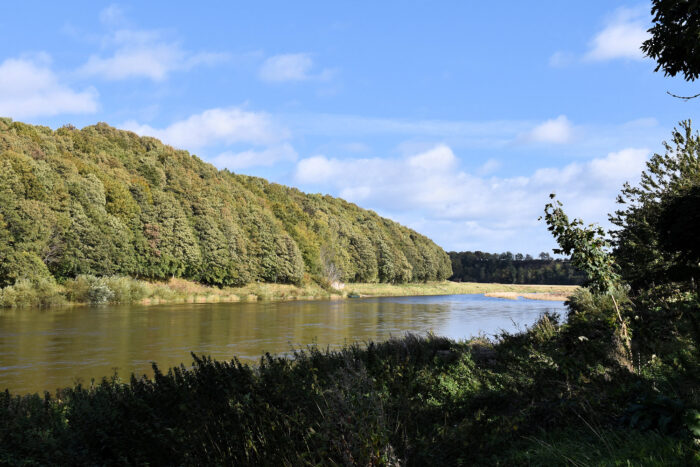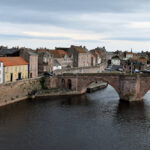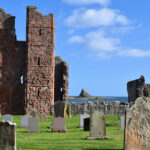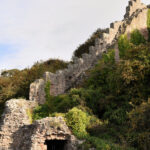This is Berwick-upon-Tweed. It’s the northernmost town in England. At other times, it’s been in Scotland. Four hundred years of border conflict. And where there’s been centuries of border conflict , there are . . .
. . . border castles! Norham Castle, about 10 km/6 miles from Berwick.
It’s a motte-and-bailey castle too. (What you probably think of as a typical castle, with a tower on a mound (motte) and surrounded by a ditch and protective fence or wall.) It was built in the 12th century with two levels, and extended and enlarged over the years.
Throught that door? I have a video….
There’s a page on the English Heritage website that summarises the sieges, the takings and the returnings. I’ve extracted some of it below (in italics).
Norham’s founder was Ranulph Flambard, Bishop of Durham from 1099 until 1128. In the medieval period the Bishops of Durham enjoyed near-kingly powers, in return for enforcing order along the English–Scottish border. . . . The importance of Norham was illustrated when Henry II ordered Hugh du Puiset, who became Bishop of Durham in 1153, to rebuild the castle. This Bishop Puiset did on a grand scale, erecting the great tower on the site of Flambard’s original two-storey hall to provide high-status accommodation.
Between 1208 and 1212 King John also spent large sums on the castle. Its strength was demonstrated in 1215 when Alexander II of Scotland besieged Norham for 40 days, but failed to take it. Peace between England and Scotland was signed at Norham in 1219, and lasted along the border for most of the 13th century. . . . Edward I’s subsequent claims of overlordship over Scotland precipitated prolonged warfare in the borders. The Scots besieged Norham unsuccessfully in 1318, 1319 and 1322, and eventually took it in 1327, but it was restored to the bishop the following year. Thereafter Norham benefited from a period of relative peace, before it was besieged by James IV of Scotland in 1497 in support of Perkin Warbeck, a pretender to the English throne. The castle resisted attack for two weeks before an English army relieved it.
Much more significant damage was done in 1513 when James IV invaded with a large army, and this time captured Norham after a short siege. In less than three weeks Norham was restored to the Bishop of Durham after the English defeated the Scots at the Battle of Flodden nearby. But the ferocious Scots bombardment had resulted in great damage. Such was Norham’s importance that rebuilding began almost immediately, this time to transform the castle into a powerful artillery fortress. . . . The castle was maintained for most of the century, but in 1596 Elizabeth I refused to spend any money on it, and after the union of the English and Scots crowns in 1605 it slowly fell to decay.
The castle overlooks the village of Norham.
The village church, St Cuthbert’s.
I thought those windows would look good from inside, and the church was open. “Please keep the door shut to keep the birds where they should be.”
Inside was unexpected. It’s bigger on the inside 🙂 With big arches and high ceilings. Also, notice the pillars on the right are different to the pillars on the left?
You might have noticed, I love old churches (and cathedrals). They’re visually and architecturally interesting, of course, but in times past, churches were the centre of their communities and they reflect the history of their communities, and that history is preserved in them in ways it can’t be in other types of buildings. (That might be why most existing Anglo-Saxon structures are churches.) In this case, the round pillars are from the original 12th century Romanesque building (as is the wall that brought me in, although not the actual stained glass, that’d be more recent). The church has been extended and reduced and restored over time, mostly in the 19th century.
And speaking of Anglo-Saxon remains, in the 1830s, these stones (probably Saxon, possibly reused in a now-gone Medieval building) were discovered in the church yard and cemented together to form this pillar within the church.
A short walk from the church: this bank is England, the far bank is Scotland.
